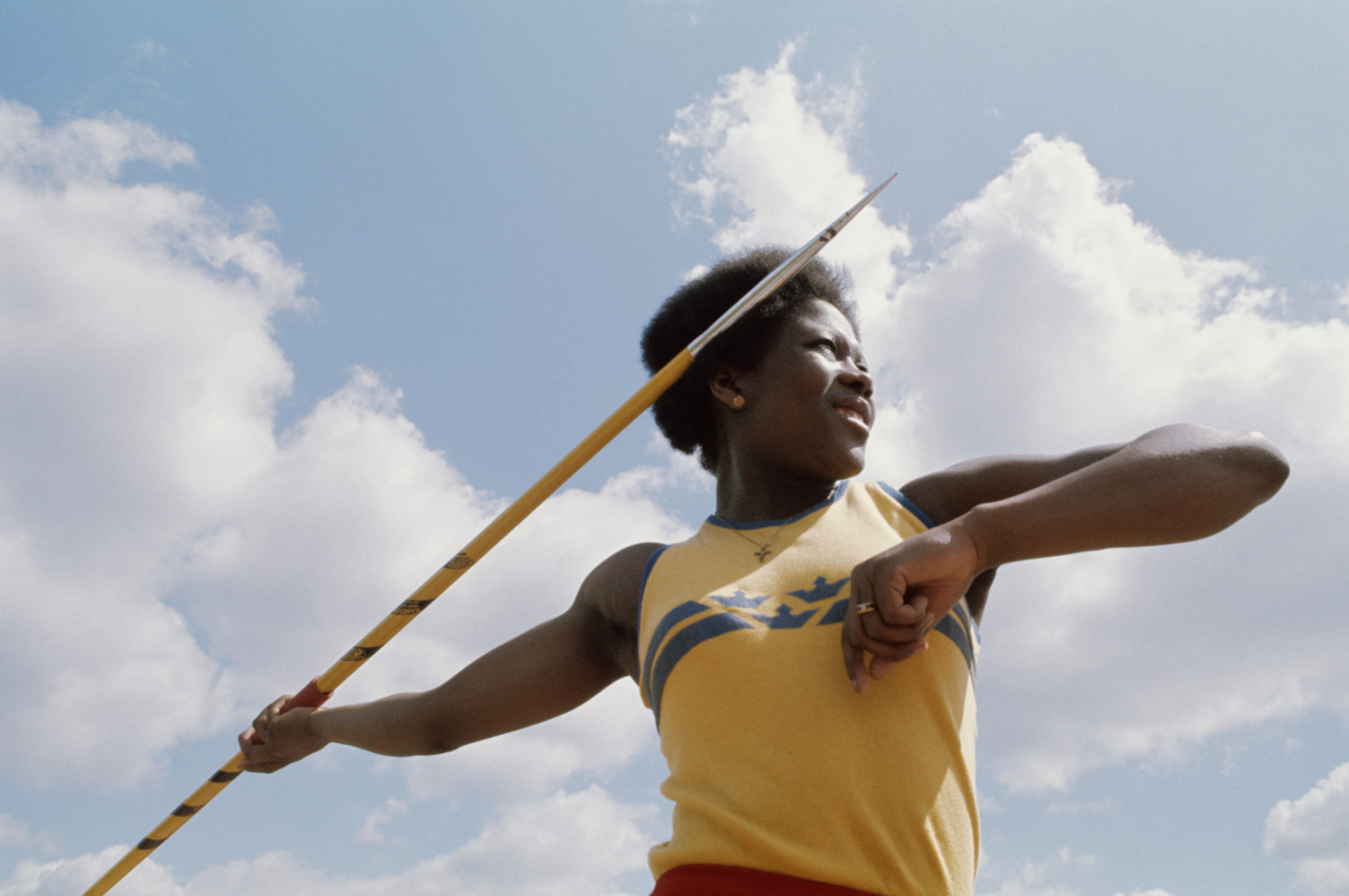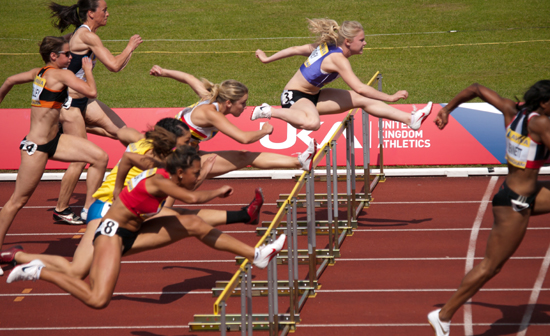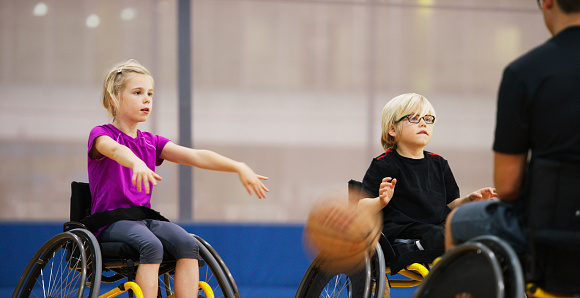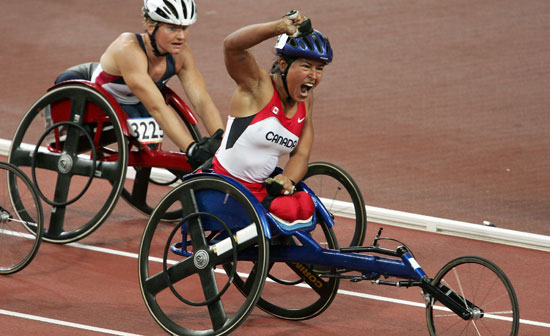This report is grounded in the rich history of Title IX and takes a multi-dimensional look at its impact. The report is based on a rigorous literature review and original research using publicly available data sets. The focus is primarily on the enforcement of Title IX in athletics and the three major areas that should be reviewed in ongoing and regular Title IX audits: athletic participation opportunities, allocation of athletic scholarship funding, and allocation of resources in operational areas. The report examines Title IX through the lens of intersectionality, explores emerging issues, and looks ahead to what is needed to accelerate the pace of change for the next 50 years.
50 Years of Title IX: We’re Not Done Yet

Her Life Depends On It III

Her Life Depends On It III is the Women’s Sports Foundation’s comprehensive report that reviews existing and emerging research on the links between participation in sport and physical activity and the health and wellbeing of American girls and women. As with the previous editions in 2004 and 2009, this study also confirms that physical activity and sport provides the critical foundation, in no small part, that allows girls and women to lead healthy, strong, and fulfilled lives. Ten years since its first publication, the updated Her Life Depends On It provides an even more comprehensive review of the ever-expanding body of research that demonstrates how important it is for girls and women to participate in sport and physical activity. The report’s contents reflect the review of 1,500 studies, nearly 400 covered since the previous edition.
Read the Her Life Depends On It III Executive Summary here.
Read the Her Life Depends On It III Official Press Release here.
To assist readers who have specific interests, the WSF has created a series of Research Briefs from Her Life Depends On It III on the following topics:
Academic Progress and Sports and Physical Activity
Collegiate Coaching and Athletic Administration
Concussions
Female Athletes and Knee Injuries
Female Athlete Triad
Girls and Women of Color in Sports and Physical Activity
Health Factors Impacted by Sports and Physical Activity
Women in Sports Leadership
Sexual Orientation Discrimination in Sport

On June 24, 2009, Massachusetts Representative Barney Frank submitted a bill to the United States House of Representatives that, if passed by both houses of Congress and signed by President Obama, would prohibit employment discrimination based on sexual orientation and gender identity. The Employment Non-Discrimination Act (ENDA), as the bill is known, would ensure fair employment practices by making it illegal to fire, refuse to hire, or fail to promote an employee based on real or perceived sexual orientation or gender identity. Religious organizations, the military and businesses with a small number of employees would be exempt from the law. The first version of this “gay rights” bill was introduced in 1974 by Representatives Bella Abzug and Ed Koch from New York. Thirty-five years later, prospects for passage of this basic civil rights protection into federal law are much better, and reflect changing societal perspectives on lesbian, bisexual, gay, and transgender rights.
Currently twenty states and the District of Columbia have enacted laws prohibiting employment discrimination based on sexual orientation. Twelve of these states also prohibit discrimination based on gender identity/expression. In addition, many cities and towns across the US have similar laws. If it became law, ENDA would be the first federal law extending non-discrimination protection based on sexual orientation.
A version of ENDA that did not include gender identity/expression was introduced in 2007, but was not acted on. ENDA supporters in the legislature believed that they could not pass the bill with gender identity included. The decision to drop protections for gender identity discrimination prompted several gay rights organizations and leaders to withdraw their support of ENDA if it did not include protections on the basis of gender identity and expression.
So, what does ENDA have to do with sports? It is a sad and shameful truth that lesbian, gay, bisexual and transgender people (or those perceived to be) are still discriminated against in sports. Prospective women coaches are still not hired because they are (or are perceived to be) lesbian or bisexual. Women coaches thought to be lesbian or bisexual are harassed, stereotyped, fired or targeted for negative recruiting by rival coaches.
Male coaches who are gay or perceived to be gay would also be protected by ENDA. Though men’s sports has traditionally been perceived to be a hostile environment for gay men, more gay coaches, administrators, athletic trainers and other staff are choosing to identify themselves. Negative recruiting against male coaches based on sexual orientation is an increasing problem as gay men become more visible in sport. Until women’s and men’s sports eliminate homophobia, lesbian, gay, bisexual and transgender athletic employees need legal protections from discrimination based on sexual orientation and gender identity, not just in twenty states, but in all fifty states. That is what a federal non-discrimination law would ensure.
Challenging sexual orientation and gender identity discrimination is possible, even without a federal law prohibiting discrimination. (The Women’s Sports Foundation’s It Takes A Team initiative includes information on laws and legal resources to combat discrimination.) However, a federal law would extend discrimination protection to all states and would provide employees targeted by gender and sexual orientation discrimination with a powerful additional legal tool equivalent to other federal laws prohibiting discrimination on the basis of sex, race, religion, national origin and disability.
Passage of ENDA would provide federal protection from discrimination based on sexual orientation and gender identity/expression for employees in athletics: athletic administrators, coaches, athletic trainers and all others who work in athletics.
Supporters of equality in sport for women have a stake in supporting legislation that protects athletic employees from discrimination on the basis of sexual orientation and gender identity as well. As long as any woman coach, administrator or other athletic staff member is subject to discrimination based on real or perceived sexual orientation or gender identity, all women are at risk being targeted by this kind of unfair treatment.
The Women’s Sports Foundation supports legislation that provides protection from discrimination based on real or perceived sexual orientation and gender identity. Women’s and men’s sport will benefit from ensuring that all participants are able to coach and compete in a climate where their achievements are based on their competence and character, not on their sex, sexual orientation or gender identity.
The Human Rights Campaign and the National Gay and Lesbian Task Force are two of several organizations working to secure passage of ENDA.
On the Team: Equal Opportunity for Transgender Student-Athletes

Go Out and Play – Understudied Populations

Go Out and Play: Youth Sports in America is a comprehensive research report that covers a range of topics including sports access for children with disabilities. Significant numbers of children from immigrant families are involved with sports and exercise. Their interest is palpable, but for reasons we do not understand, girls lag behind boys in participation.
Advocates Back Athletes with Disabilities

Good morning. I am Aimee Mullins, a world record holder and Paralympian in track and field and the president of the Women’s Sports Foundation, a nonprofit national educational organization founded in 1974 by Billie Jean King to advance the lives of girls and women through sports and physical activity. Under my leadership, the Foundation has undertaken as one of its core public policy initiatives to ensure that all girls, including girls with disabilities, have the opportunities to derive the important benefits from sports and physical activity participation.
Ensuring that all students have opportunities for sports and physical activity is especially critical now when we are facing an obesity epidemic among our youth.
- One in every six children is obese (BMI 30+); one in three is overweight (BMI 25+)
- $67.6 billion is spent annually nationwide on health care treatment and research, yet only $17 million is spent each year on prevention. (almost 4,000% more!)
- 300,000 people in the United States die each year from complications related to obesity
- Obesity is the number-one preventable cause of death
- Individuals with disabilities are at an even greater risk of being physically inactive and the subsequent health risks associated with obesity and sedentary behavior.
- 50% of people with disabilities do not engage in any physical activity,
- Only 23% of people with disabilities are active for at least 30 minutes three or more times per week
We know that sports and physical activity is an effective intervention to addressing the obesity epidemic. Especially among individuals with disabilities, the benefits reaped from physical activity are numerous.
Specifically, sports and physical activity participation helps reduce the health care costs spent on treating both direct and indirect costs associated with obesity. Controlling weight and improved circulation prevents health problems, such as reducing the risk of heart disease, breast cancer and debilitating stress-related illnesses such as depression.
Moreover, we know that individuals with disabilities who participate in sports are more confident and have higher self-esteem and better body images than individuals who do not. Furthermore, individuals with disabilities that participate in sports have higher rates of academic success, are more likely to graduate from high school, are more likely to matriculate in college, and experience greater career success and more options.
Despite all these benefits, athletic opportunities for girls and women with disabilities continue to be limited. At present, neither the National Federation of State High School Athletic Associations nor the NCAA officially sanctions any interscholastic or intercollegiate program, event or competition for individuals with disabilities.
When I competed in track and field at Georgetown University, I was the first athlete with a disability to compete against athletes without disabilities as part of an NCAA Division I track team. I was fortunate to compete at a school like Georgetown that embraced my participation on the track team.
However, this type of inclusion is more of the exception than the norm. Not only do most schools not provide teams for individuals with disabilities, but frequently, schools are not willing to allow athletes with disabilities to participate inclusively on teams with athletes without disabilities.
One example of this type of exclusion occurred for Tatyana McFadden, a wheelchair racer in Howard County, Md., who was denied access to compete with her high school teammates on the track at the same time. In Tatyana’s case, it took a lawsuit against the school in order for her to be allowed to race on the track at the same time as the other student athletes.
To prevent situations like Tatyana’s from happening again, the Women’s Sports Foundation joined forces with the Maryland Disability Law Center and passed the Fitness and Athletic Equity for Students with Disabilities Act that signed into law in Maryland in May of this year. This Act is a landmark piece of legislation that, for the first time, specifies the actions school systems must take to include students with disabilities in physical education and athletic programs.
The bill requires that schools ensure that students with disabilities have equal opportunities to participate in physical education and athletic programs, develop policies and procedures to promote and protect the inclusion of students with disabilities, and provide annual reporting to the Maryland State Department of Education detailing their compliance with these requirements.
However, while we have won an important match in Maryland, the set is not yet complete. The lack of opportunities for students with disabilities in school physical activity programs is not isolated to Maryland and thus legislation like the Fitness and Athletic Equity for Students with Disabilities Act is needed nationally.
The Foundation is committed to working to ensure that all of our educational institutions institutionalize the support and infrastructure in their sport and physical activity programs to include students with disabilities.
Sport is too potent a force in society and has too much of an impact on an individual’s health, confidence and self-esteem for us not to do everything we can to ensure that sports girls and boys with disabilities are treated as well as sports girls and boys without disabilities.
